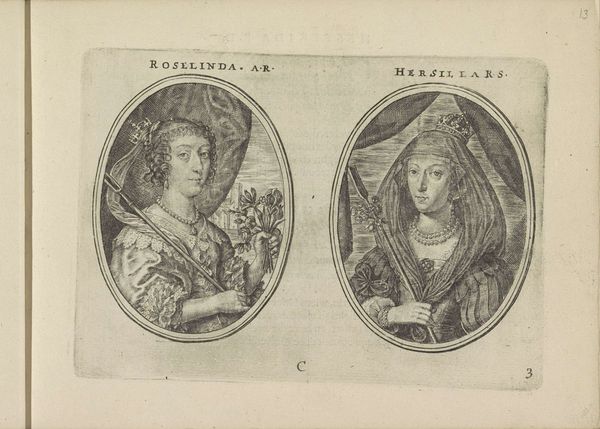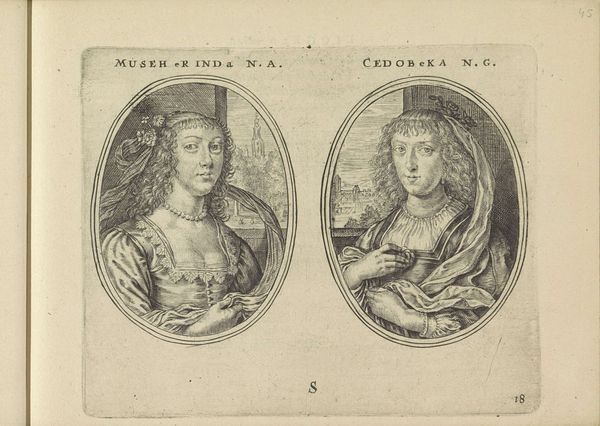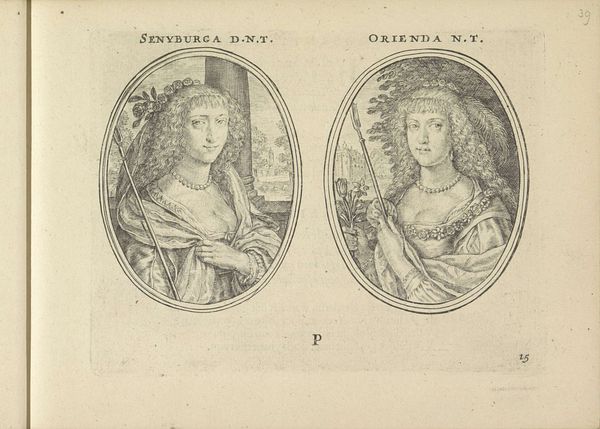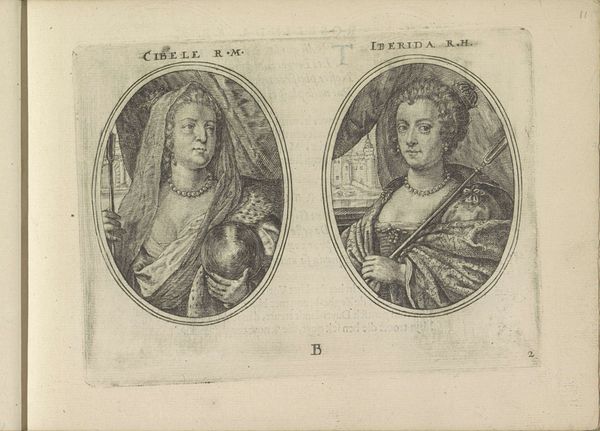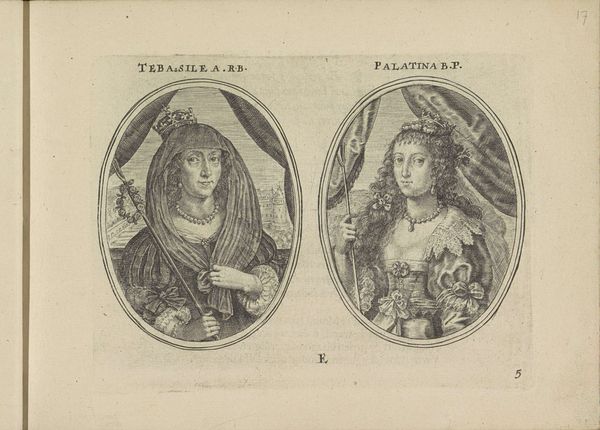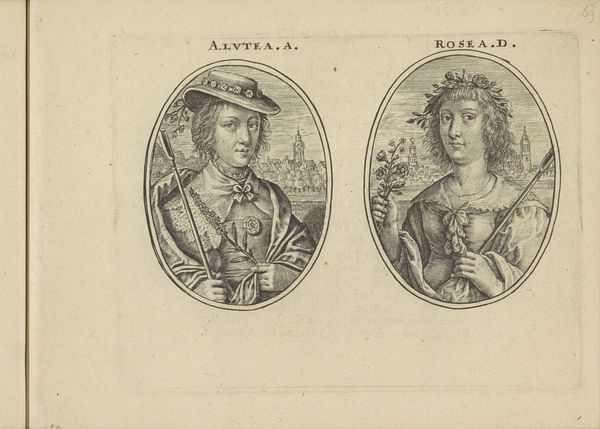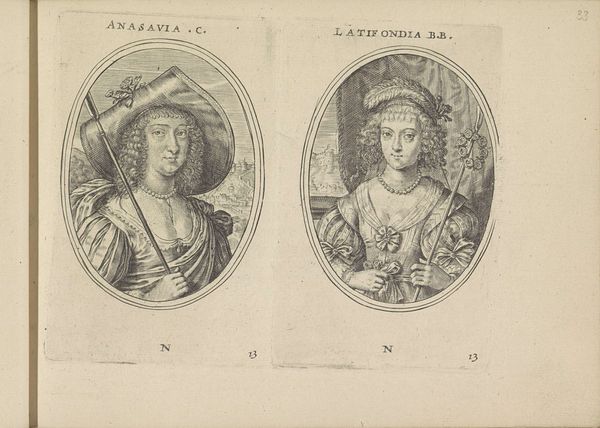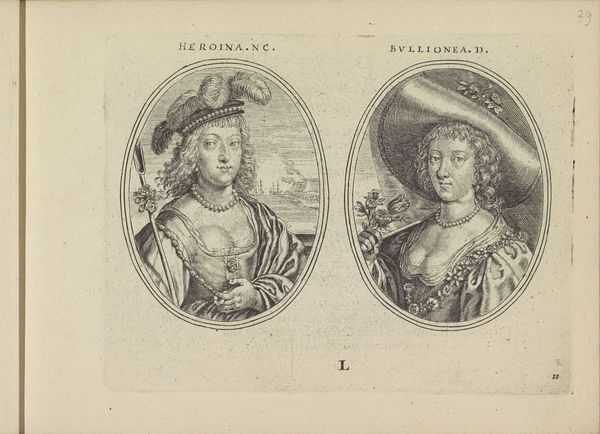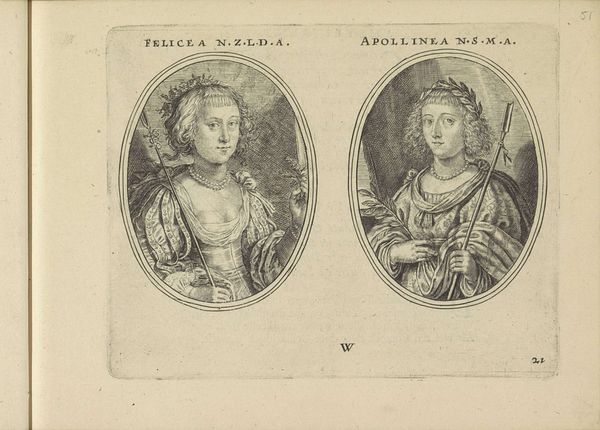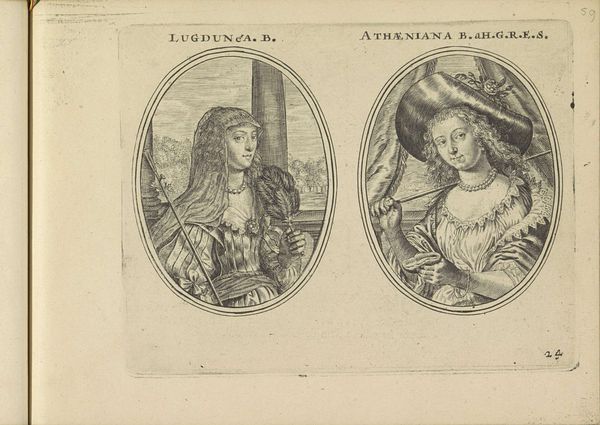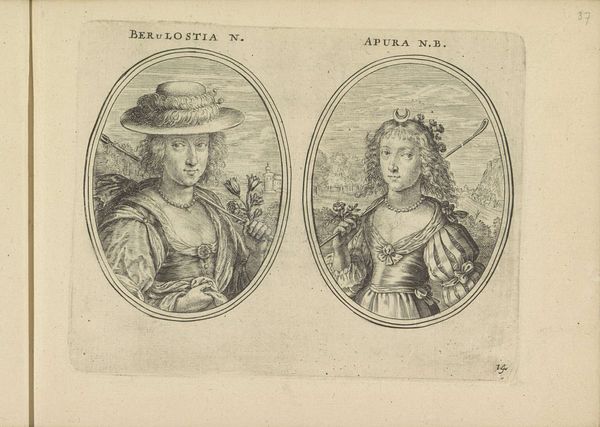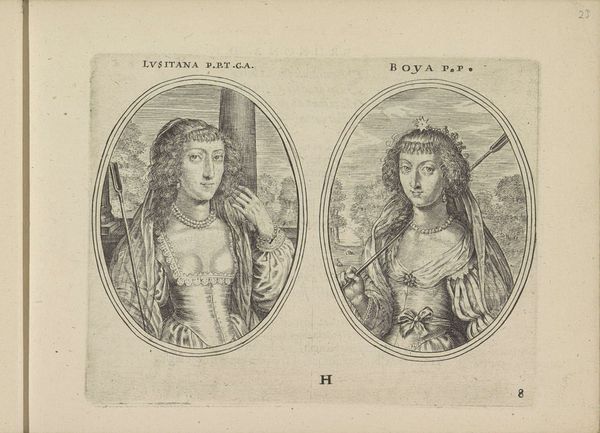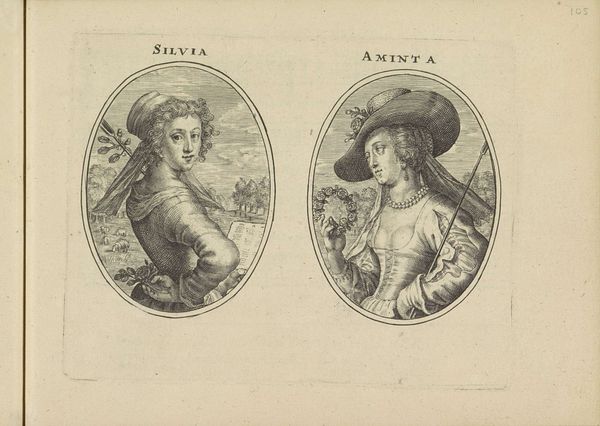
Portretten van twee onbekende vrouwen, beiden als herderin 1640
0:00
0:00
crispijnvandeiipasse
Rijksmuseum
print, engraving
#
portrait
#
baroque
# print
#
old engraving style
#
genre-painting
#
engraving
Dimensions: height 115 mm, width 150 mm
Copyright: Rijks Museum: Open Domain
Curator: This engraving, created around 1640 by Crispijn van de Passe the Younger, depicts "Portraits of Two Unknown Women, Both as Shepherdesses". It resides in the collection of the Rijksmuseum. What stands out to you most? Editor: The theatricality of it. Even in this monochromatic print, there's a strong sense of drama. The women are posed, self-aware, and playing a role. The rendering feels almost costume-like; everything seems incredibly stylized. Curator: Absolutely, let's consider the labor embedded in this baroque print. The etching and engraving process demands highly skilled artisans and specialized tools, not only for the original artwork, but potentially to be circulated more widely as a means of display or as patterns to be repeated and re-used in textile creation or applied art. The level of precision for line work achieved through such tools reveals remarkable artistry, and its economic status in disseminating this status is not lost on me. Editor: Agreed, but the pastoral imagery chosen! Shepherdesses evoke Arcadia, an idealized, nostalgic vision of rural life. Even in the 17th century, portraying women as such carries rich associations. The roses, the arrows, the decorative staff with the feather… each carefully selected for symbolic resonance and projecting idealized femininity. The arrow points toward romantic associations—cupids perhaps? Curator: Let's not forget that fashion is also being documented and perhaps dictated here. Note the materiality of their costumes: silks perhaps, satins. The clothing emphasizes status, consumption, and the labor of dressmaking in itself. Who would wear such dress outside of court circles and performance, or as expressions of conspicuous wealth in city circles? Editor: Perhaps it's a statement about social mobility too, the aristocracy adopting the trappings of the common folk, appropriating a supposedly "simpler" way of life to mask underlying anxieties and insecurities about societal structure? This romantic, symbolic lens through which nobility wanted to be seen! The backgrounds, almost caricatures of nature itself. One city to the right; open fields on the left; very different spaces! Curator: Ultimately, a work like this makes us consider how social standing can become entwined with artistry. It questions the relationship between art, craft and labour, as well as our consumption patterns. The printing process alone tells so much about trade and distribution. Editor: Indeed. And seeing them now, these “unknown women” speak to our endless fascination with persona, disguise, and how carefully constructed our images of ourselves have always been through symbols we inherit and manipulate.
Comments
No comments
Be the first to comment and join the conversation on the ultimate creative platform.
